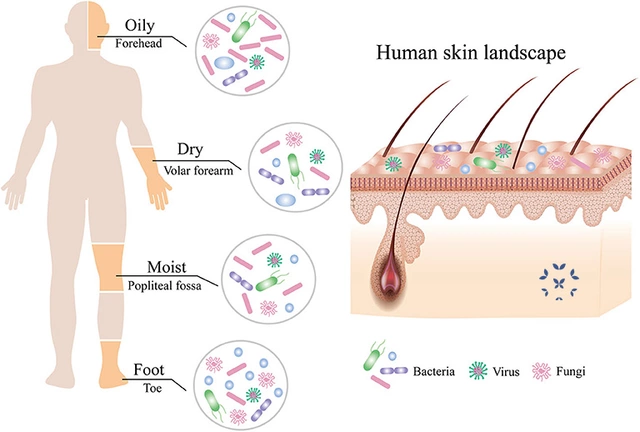Primidone is a synthetic anticonvulsant medication that has been used since the 1950s to control various seizure types. Its unique profile comes from a dual action: it acts directly on neuronal membranes and, after hepatic conversion, it releases phenobarbital, a classic barbiturate. Understanding why this drug works requires a quick look at the chemistry, the biology of seizures, and the way the body processes the molecule.
Why seizures happen: the role of GABA and sodium channels
At the heart of most epileptic activity lies an imbalance between excitatory and inhibitory signals. GABA is a major inhibitory neurotransmitter that binds to GABA_A receptors, opening chloride channels and dampening neuronal firing. When GABA signaling weakens, neurons fire too easily, leading to the synchronous bursts we recognize as seizures. Sodium channels are protein pores that allow rapid influx of Na⁺ ions during the depolarization phase of an action potential. Overactive sodium channels amplify excitatory currents, making the brain’s electrical storm harder to stop.
Pharmacodynamics: how Primidone tames the storm
Primidone’s first line of defense is its barbiturate‑like effect. Although chemically distinct from phenobarbital, it binds to the same GABA_A receptor allosteric site that enhances chloride influx, prolonging inhibitory postsynaptic potentials. The result is a slower rise in neuronal excitability and a higher threshold for seizure propagation. This mechanism is similar to other barbiturates but is milder, which explains why Primidone can be started at lower doses and titrated upward.
Metabolism: the phenobarbital connection
After oral absorption, roughly 30‑40% of Primidone is converted in the liver to phenobarbital, its active metabolite. The conversion is driven by the Cytochrome P450 2C9 enzyme system a family of liver enzymes that oxidize many drugs, including Primidone. Phenobarbital’s half‑life (70‑120hours) far exceeds that of the parent drug (10‑12hours), providing a prolonged anticonvulsant cushion. This metabolic pathway is why clinicians monitor both Primidone and phenobarbital plasma levels, especially in patients with liver impairment.
Pharmacokinetics: dosing, half‑life, and clearance
Primidone reaches peak plasma concentrations within 1-2hours after ingestion. Its short half‑life demands once‑ or twice‑daily dosing for the parent compound, while the phenobarbital metabolite sustains seizure control over days. Clearance averages 0.8L/kg/h in healthy adults but can drop by 30% in the elderly or in those taking enzyme‑inhibiting drugs. Because phenobarbital induces its own metabolism, a phenomenon known as auto‑induction, steady‑state levels may plateau after 2-3 weeks of therapy.
Clinical use: which seizures respond best?
Primidone is FDA‑approved for generalized tonic‑clonic seizures and partial seizures with secondary generalization. Real‑world data from the 1970s to early 2000s show seizure freedom rates of 45‑55% in newly diagnosed patients when titrated to 300‑600mg/day. It is also useful in children with absence seizures, though the newer drug ethos recommends lamotrigine or ethosuximide first due to side‑effect profiles.
Comparison with other anticonvulsants
| Attribute | Primidone | Phenobarbital | Phenytoin |
|---|---|---|---|
| Primary Mechanism | GABA_A potentiation + phenobarbital metabolite | Barbiturate‑type GABA_A potentiation | Voltage‑gated sodium‑channel blocker |
| Half‑life | 10‑12h (parent) / 70‑120h (metabolite) | 70‑120h | 22‑48h |
| Typical Daily Dose | 100‑600mg | 60‑200mg | 100‑400mg |
| Common Indications | Generalized tonic‑clonic, partial seizures | Generalized seizures, status epilepticus | Partial seizures, tonic‑clonic |
| Key Side Effects | Drowsiness, ataxia, rash | Sedation, cognitive slowing | Gingival hyperplasia, hirsutism |
Drug interactions and enzyme induction
Because both Primidone and phenobarbital are strong inducers of hepatic enzymes, they can lower plasma concentrations of many co‑administered drugs. Notable interactions include reduced efficacy of oral contraceptives, warfarin, and certain antiretrovirals. Conversely, drugs that inhibit CYP2C9, such as fluconazole, can raise Primidone levels and increase toxicity risk. Clinicians often check the FDA U.S. Food and Drug Administration, the regulatory body that approves drug labeling and safety information interaction tables before adding new medications.
Therapeutic drug monitoring: keeping levels in the sweet spot
Therapeutic ranges differ for each component: Primidone 5‑12µg/mL and phenobarbital 15‑40µg/mL. Therapeutic drug monitoring clinical practice of measuring drug concentrations to optimize efficacy and minimize toxicity is especially important in pediatric patients, pregnant women, and those with renal or hepatic dysfunction. Blood draws are typically drawn 12hours after the last dose to capture trough levels.
Safety profile and adverse effects
Common side effects include drowsiness, dizziness, nausea, and ataxia. Rare but serious reactions involve severe skin rashes (Stevens‑Johnson syndrome) and blood dyscrasias. Because phenobarbital contributes to sedation, patients should avoid operating heavy machinery during dose escalation. In long‑term therapy, bone density monitoring is recommended, as chronic barbiturate use can affect calcium metabolism.
Related concepts and next steps in epilepsy care
Primidone sits within a broader epilepsy treatment algorithm stepwise approach that starts with monotherapy, progresses to combination therapy, and considers surgical options when medication fails. After stabilizing a patient on Primidone, physicians may evaluate adjunctive agents like levetiracetam or consider non‑pharmacologic options such as vagus nerve stimulation. Understanding how Primidone’s metabolism intertwines with phenobarbital also opens discussions about drug‑resistant epilepsy and the potential role of enzyme‑inducing therapies.
Quick takeaways
- Primidone works by enhancing GABA_A inhibition and converting to phenobarbital, a potent barbiturate.
- CYP2C9 drives the metabolic link, making enzyme‑induction a key consideration.
- Therapeutic drug monitoring keeps both parent and metabolite levels within safe ranges.
- Side‑effects are generally sedative; major risks include rash and bone loss.
- It remains a solid first‑line option for generalized tonic‑clonic and certain partial seizures.
For anyone looking for a concise, science‑backed explanation of why Primidone anticonvulsant still holds a place in modern epilepsy therapy, the points above capture the core mechanisms, practical considerations, and safety checks.
Frequently Asked Questions
How quickly does Primidone start working?
Patients usually notice a reduction in seizure frequency within 1-2 weeks of starting a low dose, but full therapeutic effect may take up to 4 weeks as phenobarbital levels build up.
Can I take Primidone with birth control pills?
Because Primidone induces liver enzymes, it can lower hormonal contraceptive efficacy. Always discuss alternative or backup contraception with your doctor.
What blood levels are considered therapeutic?
Target trough concentrations are 5‑12µg/mL for Primidone and 15‑40µg/mL for its metabolite phenobarbital. Levels outside this window may require dose adjustment.
Is Primidone safe during pregnancy?
Data are limited, but animal studies suggest a low teratogenic risk. The decision balances seizure control against potential fetal exposure; specialist guidance is essential.
Why do I feel drowsy after taking Primidone?
The drug enhances GABA inhibition, which naturally produces a calming effect. Drowsiness usually subsides after the dose is titrated to a steady state.
Can I switch from Primidone to another seizure medication?
Yes, but a gradual cross‑taper is recommended to avoid breakthrough seizures and to allow phenobarbital levels to fall safely.
What should I do if I miss a dose?
Take the missed dose as soon as you remember unless it’s close to the next scheduled dose. In that case, skip the missed one and continue with your regular schedule.







18 Comments
Just took my mom to her neuro appointment yesterday and she’s been on primidone for 8 years 🥲 She says the drowsiness faded after a few weeks but she still gets wobbly if she skips a dose. Glad someone finally explained why it works so well for her. Also, she swears by the 12-hour blood draw rule - says her doctor never checks it wrong. ❤️
So primidone’s basically a sneaky barbiturate in disguise? 😅 I always thought it was just some fancy new drug, but turns out it’s just phenobarbital in a hoodie. Still works though. My cousin’s seizure-free on it after 15 years. Wild how the body turns one molecule into two different treatments. Science is weird and cool.
Wow another article praising barbiturates. Next you’ll tell me aspirin is the cure for everything. People died from these drugs in the 60s. Why are we still giving them to kids? Because Big Pharma doesn’t want you to know about CBD oil.
Why is this even a thing? Everyone knows lamotrigine is better. This is like using a typewriter when you have a laptop. And why are we still measuring phenobarbital levels? It’s 2025. Just use the newer meds. Why do doctors still do this?
Phenobarbital metabolite. CYP2C9. Therapeutic window. All very precise. But let’s be real - this is just pharmacology theater. Most patients don’t need this level of detail. They just need to not have seizures. The rest is academic vanity.
Let me ask you this: if primidone is just a phenobarbital delivery system, then isn’t the entire premise of modern epilepsy treatment a lie? We’re not treating seizures - we’re just slowly poisoning people with 1950s chemistry while pretending it’s science. The real question isn’t ‘how does it work?’ - it’s ‘why are we still doing this?’
Look, I’ve been on this stuff for 12 years and I’ve seen everything - the drowsiness, the ataxia, the way your brain feels like it’s wrapped in cotton during a thunderstorm. But here’s what no one tells you: when you’ve had 30 seizures in a month and then you go 6 months without one, you stop caring about side effects. This drug saved my life. The fact that you’re overanalyzing the pharmacokinetics while someone’s kid is having tonic-clonic seizures in the ER? That’s the real tragedy. I’ve cried in parking lots after doses because I was too dizzy to walk. I’ve missed birthdays. But I’m alive. So don’t act like this is just a textbook. This is someone’s reality.
Okay but… why does CYP2C9 matter more than CYP3A4 here? I get that it’s the main metabolizer, but isn’t that enzyme super variable between populations? Like, some folks in Asia have slower versions - does that mean they need lower doses? Just wondering if this is one of those ‘one-size-fits-all’ meds that kinda ignores genetic diversity.
Great breakdown! 👏 If you’re new to primidone, here’s the real advice: start low (like 50mg), go slow, and don’t panic if you feel like a zombie for the first week. Your body will adjust. And yes - tell your doctor if you’re on birth control. I’ve seen too many girls get pregnant because they didn’t know. Also, keep a seizure diary. It helps so much. You got this! 💪
Kinda funny how everyone’s obsessed with the ‘new’ drugs when primidone’s been quietly saving lives for 70 years. I’m not saying it’s perfect - but it’s cheap, effective, and doesn’t need fancy monitoring in most cases. Maybe we’re overcomplicating epilepsy care. Sometimes the old stuff just… works.
I read this and I think why do we still use this drug in Africa when we have better options like levetiracetam which is safer and easier to use. Why do we keep using old drugs from the west that cause more side effects. It's like we are still living in the 1950s. Why not change?
I used to work in a neuro clinic. Primidone was the go-to for rural patients because it was the cheapest and most reliable. One guy took it for 40 years. Never had a seizure. Never complained. Just took it. No fancy labs. No apps. Just a pill. Sometimes the simplest things are the most powerful.
THEY’RE HIDING THE TRUTH!! CYP2C9? PHENOBARBITAL? IT’S ALL A COVER-UP FOR THE FDA’S SECRET AGENDA TO CONTROL OUR BRAINS WITH BARBITURATES!! THEY’RE USING YOUR KIDS AS LAB RATS TO TEST PSYCHOTROPIC CONTROL AGENTS!!
I’ve been on this for 10 years and I swear it’s making me gain weight and my skin is breaking out like crazy… and my ex left me because I’m ‘too sedated’… I just want to feel like me again 😭 I’m tired of being a zombie. Why can’t they just give me something that doesn’t make me feel dead inside? I miss laughing.
Primidone is not the answer. It's just another chemical crutch. Real healing comes from meditation, diet, and spiritual alignment. Drugs are just temporary fixes for people who don't want to face the real cause of their seizures. This is not medicine. This is surrender.
Okay but what if this drug is actually making the seizures worse long term? Like… what if it’s just masking the problem until your brain totally breaks down? I read this one forum post where a guy said his daughter had a seizure after 15 years on primidone and the neurologist said ‘your brain forgot how to regulate itself.’ I’m not sleeping tonight.
This is good. Simple. Clear. I’m from India and we use this a lot here because it’s affordable. My cousin’s son is doing great on it. No drama. Just medicine. Thank you for explaining the science without the fluff.
Manish - you’re right. Simplicity wins. I’ve seen so many families in rural clinics where the only med they can afford is primidone… and their kids are thriving. That’s not failure. That’s resilience. 🙌